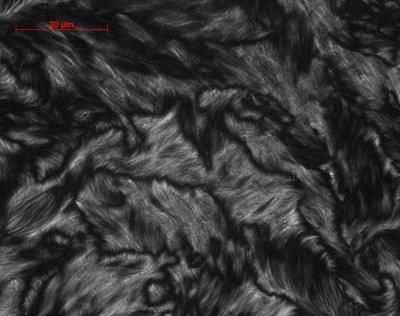Varian, Inc., and Oxford Instruments Open Life Sciences Lab Housing World's Most Powerful NMR Spectrometer
Advertisement
The world's most powerful instrument used for determining the structure, function and dynamics of large bio-molecules is now providing life scientists with information considered vital to the basic understanding of protein and nucleic acid function and to the discovery of new pharmaceuticals. The first NMR (nuclear magnetic resonance) spectrometer operating at a magnetic field strength of 900 MHz is now gathering research data at a new applications laboratory jointly operated by Varian, Inc. (Nasdaq: VARI) and Oxford Instruments, Plc.
NMR has become a critical tool in the burgeoning fields of proteomics and genomics where it is used for identifying the three-dimensional structure, function and dynamics of proteins, nucleic acids and other biological macromolecules. Determining these attributes of bio-molecules is critical to the understanding of key biological processes that are involved in human health. This information is then used as the basis for designing safe and effective pharmaceuticals.
Because of their size and complexity, these molecules require the highest possible magnetic fields in order for their structural information to be detailed atom by atom. To date, such studies have been performed on systems with 500 MHz to 800 MHz magnets.
NMR is a non-destructive, information-rich analytical technique helping researchers understand molecular structure, functionality and dynamics. An NMR experiment provides connectivity information which atoms are attached to which other atoms in a molecule; the spatial orientation of the molecule, such as how it is folded or twisted in three dimensions; as well as the motions within the molecule in its natural environment. Such structural information is critical in proteomics/genomics and drug discovery applications where scientists desire a deeper understanding of protein or nucleic acid target molecules and their spatial relationships with synthetic drug candidates.
Located in Eynsham, England near the Oxford Instruments headquarters, the 900 MHz laboratory is open to customers for conducting NMR experiments and scientific collaborations and for instrument demonstrations. Varian, Inc. and Oxford Instruments will use the facility for superconducting magnet, RF console and NMR probe development, as well as for testing new NMR theories and techniques. The companies also see the lab as a stepping stone for development efforts leading to a 1 GHz NMR spectrometer.
"Varian, Inc. and Oxford Instruments are already witnessing significant demand from leading researchers who want time on the instrument for collecting important bio-molecular data with this state-of-the art tool," said Ray Shaw, vice president of Varian, Inc.'s NMR business. "With the recent publication of the human genome map more emphasis will be placed on the role proteins play in biochemical function. We expect a dramatic increase in interest in this facility, and NMR in general.
"NMR is the premier technique that scientists can use for experimentally determining the structure, dynamics and function of proteins and other biological molecules in their native state. The life science community has anxiously awaited a 900 MHz spectrometer due to its increased sensitivity, and because NMR analyzes these biological systems in their native environment, not in crystalline form as is the case with X-ray techniques," Shaw said.





















































